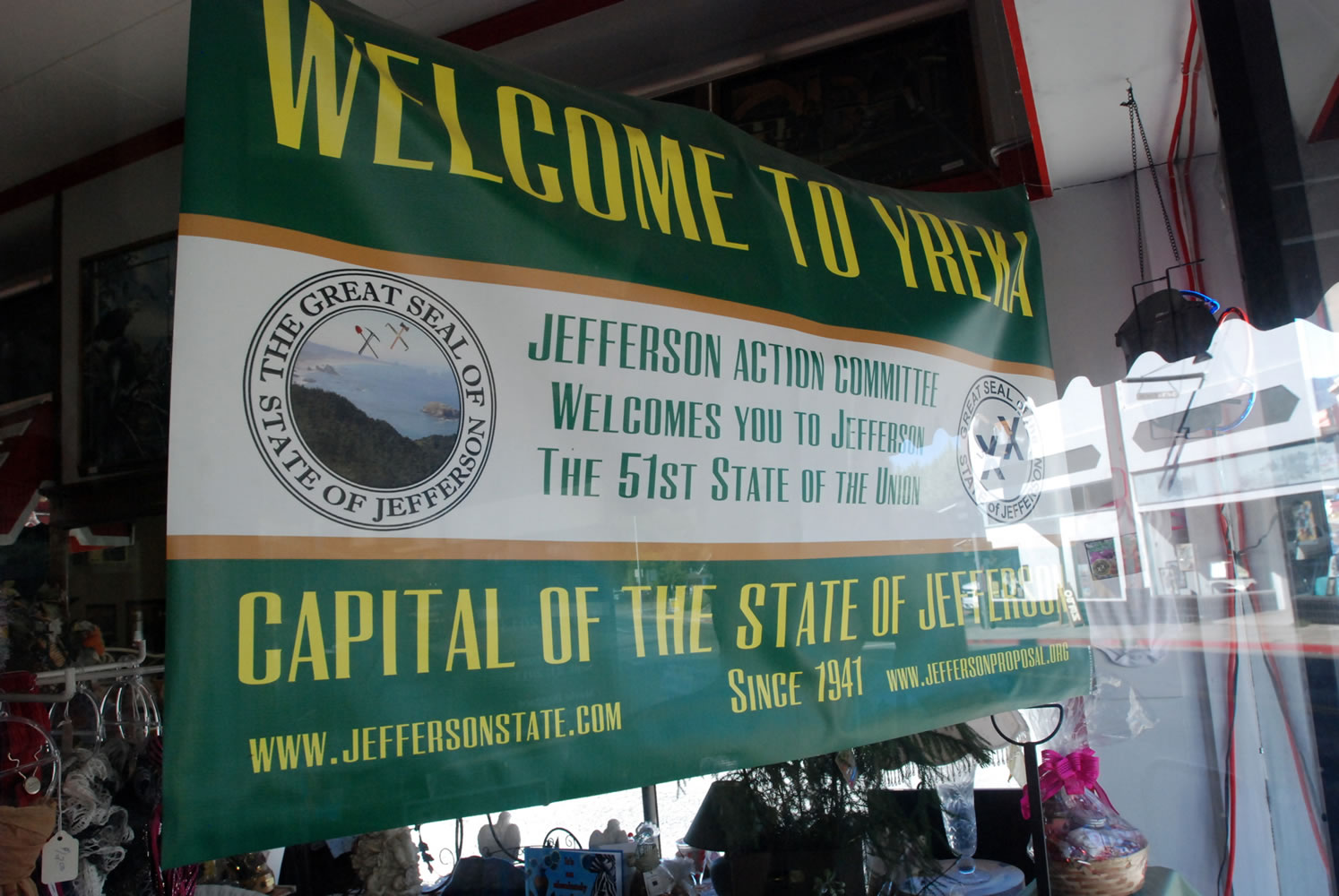YREKA, Calif. — Since the 1850s Gold Rush, some folks in the rugged hills and valleys of Northern California and Southern Oregon have felt they would be better off if they could break away and form their own state.
That old secessionist feeling is rising again in counties along the Oregon-California border, triggered by a belief that those in the urban halls of power in both states ignored the needs and desires of those in the rural areas.
This month, the Siskiyou County Board of Supervisors voted 4-1 in favor of a resolution from a local grassroots organization to make a new start and form a State of Jefferson. Other nearby counties are considering similar actions.
“People have wanted to do this for a long time, but the types of legislation coming out of Sacramento this year literally caused people to say, ‘This is the time,'” said Mark Baird, a radio station owner who drafted the resolution.
While secessionist movements have percolated throughout U.S. history — there has been talk this year of new states being carved out of rural western Maryland, northern Colorado, Michigan’s Upper Peninsula and Riverside County, Calif. — proponents have many hurdles to overcome.
They must get agreement from the state legislature and Congress to create a new state. Then there is drafting a state constitution and figuring out how to pay for it all.
State of Jefferson supporters hope people are angry enough this time that the effort will break through. The boundaries are uncertain, depending on which counties want to join in, and could include a portion of southern Oregon if secession fever heats up.
“We know it’s an uphill battle,” said Siskiyou County Supervisor Michael Kobseff. “The economic feasibility of it is a question. But my reply to that is, ‘I don’t know how we’re going to survive under the current environment.'”
With its huge, diverse population and sprawling geography, California is a natural breeding ground for secessionist desires, which have popped up periodically since 1852.
As recently as 1992 there was a nonbinding statewide vote on dividing California, which passed easily. Rural counties have been a hotbed of resentment over federal environmental laws restricting logging, irrigation, and off-road driving on national forests.
A four-hour drive north of Sacramento, Siskiyou County claims 44,000 of California’s 38 million residents. The county’s state lawmakers are Republicans in a capital dominated by Democrats. Per capita income in Siskiyou County is far below the state average. Unemployment is higher — 11.5 percent in July. Health care, schools and government now account for more jobs than mining, logging and agriculture.
“This has nothing to do with political parties,” Baird said. “It has to do with the unbelievable morass of regulatory policies directed at the northern third of California. Our lives have become so difficult and onerous. We are failing to make a living every day, and our children are leaving because they are unable to make a living.”
The idea of a new state named for President Thomas Jefferson goes back to the earliest days of the state, according to a pamphlet by local historian James T. Rock, published by the Siskiyou County Museum. It describes a 1941 movement that gained national attention, until the attack on Pearl Harbor turned attentions elsewhere.
The mayor of Port Orford, Ore., Gilbert Gable, envisioned a new state created from the counties on either side of the border with California. The cause was taken up in Yreka, which was declared the temporary Jefferson capital. A state seal was adopted, depicting a gold-mining pan etched with two Xs signifying how they had been double-crossed.
Gable assumed duties of acting governor.
Armed with hunting rifles, members of a local civic club took to blocking U.S. Highway 99 and handing out a proclamation of independence, declaring the State of Jefferson would secede every Thursday until the state of California built the roads needed to mine copper ore vital to the national interest.



